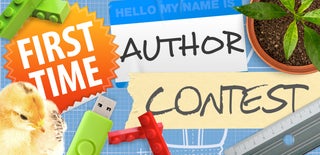Introduction: How to Become a Better Artist
This general, step-by-step tutorial will provide a comprehensive guide to better your skill as an artist.
I learned these techniques from my own trial-and-error experiences and from other tutorials I have assimilated from during my time as an aspiring artist.
Step 1: Start With Sketches
Begin with the basics. Nobody is able to pick up a pencil, as a beginner, and sketch out an epic, detailed battle scene or alien spaceship fleet.
I recommend starting with no color. Paper and pencil. The basics. If you are planning on progressing into a color artist (whether that be watercolor, oil, acrylic, or digital), I suggest you build a firm foundation with pencil sketches.
Step 2: Get Some Good Pencils
Pick out a wide selection of drawing pencils. You want the full range of b's and h's. The brand that I recommend is Kimberly. Also, get a couple no-wood and a paper blender.
80% of the time, I actually just use a yellow, no. 2. But, you also want a little variety with softness and hardness as you progress.
Step 3: Selecting Paper
Don't be overly picky choosing your paper. Just don't get anything super rough or overly smooth. I've found that 80 lb, 200 series, Strathmore Drawing Paper works excellently.
Step 4: Observe, Observe, Observe
Keep your eyes wide open. Try to see things through an artist's filter. This means, pay attention to the seemingly unimportant instead of focusing on the big picture. Use narrow vision. Observe the way light bounces off a certain substance, or how a muscle in the forearm bulges with the wrist tilts inward. Build a visual library. This will infinitely increase realism in your sketches.
Sometimes, when I am in a busy area, I like to look around and pick out little scenes that look like they could be in a drawing. I visualize how I would sketch them and then I remember.
Also, it is good to bring a small, cheap sketchbook around and do rough sketches of subjects that might be harder to remember.
For instance, lets say you are planning on drawing a furry, mythical, fantasy creature. Go out and look at dogs, lizards, and humming birds. Sketch this information and then use it in your creation process.
Step 5: Watch Films
Watch movies and pick up information.
Observe the composition of scenes.
Observe the expressions, attitudes, positions, and features of characters.
Observe costumes.
Step 6: Look at Silhouettes
Google some silhouettes and examine them. Examine the edges of objects. The curves and the textures.
Print some of your favorites off and keep them for later.
Step 7: Examine Other Peoples' Art
Go to Behance.net and look closely at other's sketches. Again, print off some of your favorites.
Step 8: Keep Observing
Explore the different styles and techniques of people online. Try them out. Combine them.
Step 9: Practice Body Form
Print off some random photos of full-body shots of people. Or get a wooden mannequin. Draw rough, essential sketches of different positions. Do at least fifty of these. Create the body out of basic circular shapes. No shading or detail work.
Step 10: Light and Value
Look around you. Watch how the light moves.
Youtube a couple videos on light and value in art.
Step 11: Do Some Thumbnails
Thumbnails are a great way to work on the composition of a scene. Do them about 2 inches by 1. Keep them small and tight. Again, don't stress over detail. This is just to get the general layout down, not to create a complete masterpiece.
A good way to practice thumbnails is to get several shots from your favorite movies and duplicate them in thumbnail form.
Do as many of these you can before you go insane.
Step 12: Rough Sketch
Using a softer pencil, take your thumbnails and enlarge them to fit the whole page. Start focusing a little more on light and value and a little detail, but don't go too far.
I usually use a no-wood pencil and rough-in the dark areas (rub with the flat of the lead).
Step 13: Smooth It Out
Duplicate some of your pictures, paying more attention to detail and keeping it more neat and clean. Use a blender to smooth out your shading and add texture.
Step 14: Get Creative
Don't be afraid to get creative. There is an ocean of resources at your fingertips. The possibilities are endless.
Step 15: Keep Practicing
Devote time each day to practicing.
Whether you are sketching still life or using a image off the internet, practice makes perfect. If nothing else, practice stabilizes your artist's hand and gets you more in touch with the motions of drawing.
Step 16: Use References
Don't try to draw solely from your imagination and memory. Use references. If you are drawing a dragon, print out pictures of chickens and elephant skin and iguanas. If you are drawing a forest scene, go sit in the woods for an hour and just look around.
Don't just print out a photo of a man and copy it. Use features from several different photos and create your own man. Use the nose from one picture and the mouth from another, use the wrinkles from an old man and the face shape of a 30 year-old.
Step 17: Just Keep Going
Remember to aim high. Don't think that just because you are a beginner or intermediate you can't show skill. Do your very best and you WILL be satisfied.
And have fun!

Runner Up in the
First Time Author Contest

Participated in the
Epilog Contest VII











